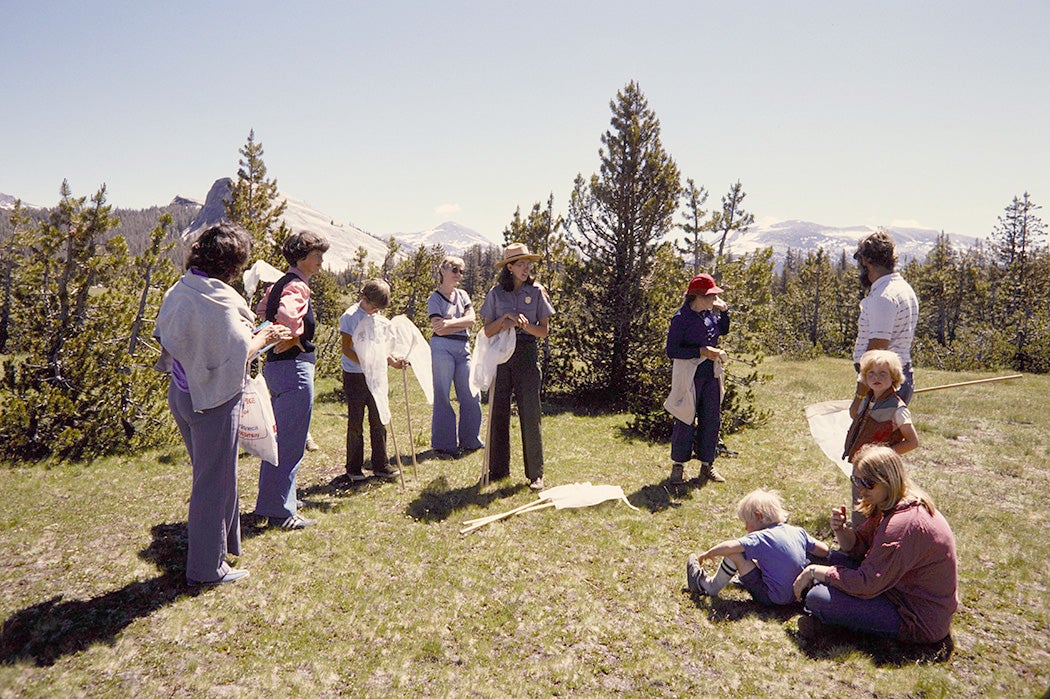When Congress established Yellowstone National Park in the Territories of Montana and Wyoming in 1872, the intention behind the act was that America’s national parks were meant for everyone. In actuality, the parks were and remain largely dominated by white, aging visitors. Although minorities make up more than thirty-seven percent of the general population, they represent only twenty-two percent of park visitors. But the issue is not purely about just visitation numbers: visitors of color have reported feeling unsafe or unwelcome in national parks.
As Emily Mott writes in a study of park visitorship and usage, “The diversity problem facing national parks runs deeper than race; it is arguably based on a long standing trend of marginalization, lack of access to the parks by minorities, and possibly, racial discrimination.”
While this issue only recently appeared in the mainstream media, the National Park Service (NPS) has been considering the problem since at least 2000, with a significant re-investigation of the issue in 2008. A comprehensive survey performed that year confirmed that seventy-eight percent of park visitors were white. “The large disparity between current societal demographics and park visitation forms a unique and problematic issue,” Mott reports.
Mott suggests that the NPS needs to undertake a campaign to attract more visitors and to encourage inclusivity. Attracting new, younger visitors is essential for the future viability of the parks, but it is also morally just to create safe and welcoming parks for marginalized groups.
The parks were designed to encourage unity and protect culture and history in tandem, as well as provide both intellectual stimulation and health benefits. However, some survey respondents noted that the cost of visiting, including the pass, lodging, appropriate gear, and transport, was prohibitive. Communication, too, was identified as an issue across the board. Many respondents said they didn’t know much about the park system or how to visit. Even if a park was able to be visited easily and affordably as a day visit, potential visitors didn’t have ample information on how to do so.
Mott argues that a media campaign that details the many ways to visit a park and the diversity of parks is needed to attract more visitors, but the issue extends beyond marketing campaigns. Expanding access is the key to the future success of the parks. Making parks more accessible includes making them easy to visit and use, but also more welcoming. At the time of the study, more than eighty percent of park staff were white, and less than one-quarter of the monuments within the parks were of people of color or women. Writes Mott, “Arguably, the more our national parks incorporate and value minority history, the more minorities will actually want to visit the parks.” New monuments and parks “should attempt to focus on the historical significance of minorities and minority contributions to society and the national park system as a whole.”
Weekly Newsletter
There are ongoing initiatives to encourage visitation. For instance, 2015 saw the beginning of the Every Kid in a Park (now Every Kid Outdoors) initiative, which offers free admission to national parks to fourth graders and their families. Some park rangers have also been coordinating school visits from urban areas and providing free transport. As previous park director Jonathan Jarvis stated, “We know that if we can get them here, it can be transformative.”
The future of the parks hinges on who visits them. Concludes Mott, “If NPS does not begin to entice a younger generation of more racially diverse individuals to visit the parks, the preserved national and historical lands the government has intentionally set aside for future generations will go unappreciated and potentially underfunded.”
Support JSTOR Daily! Join our new membership program on Patreon today.







